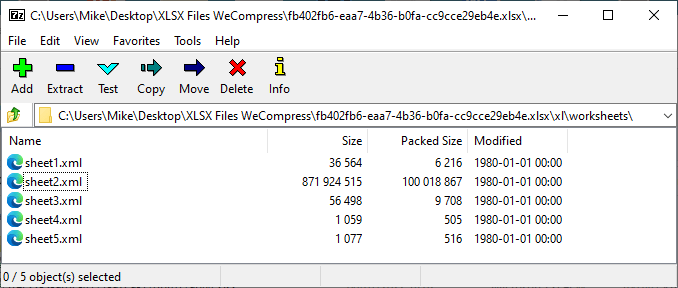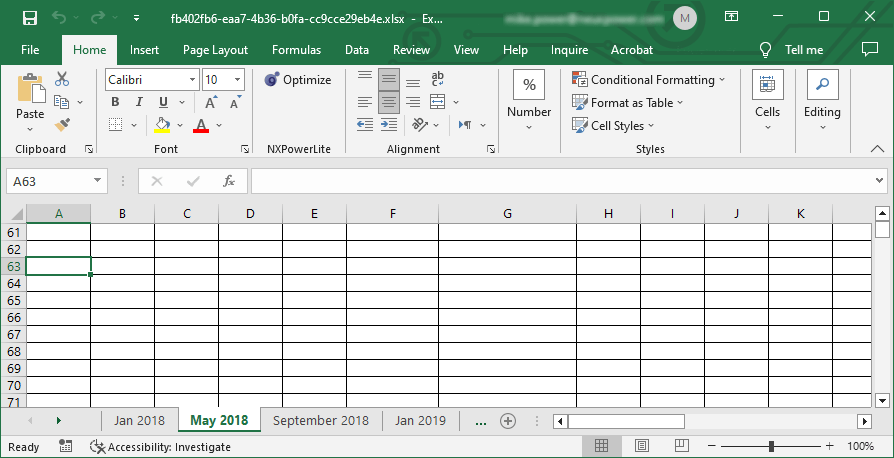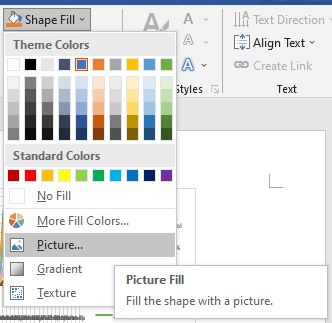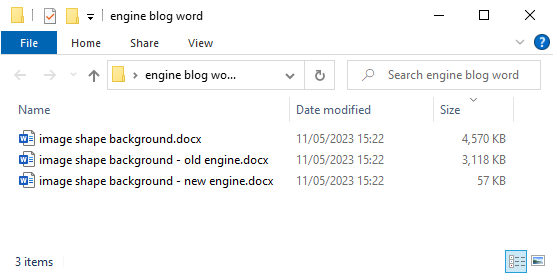Compression engine major upgrade – version 10
We’re happy to announce a big compression engine upgrade for our free online file compressor WeCompress today. We’ve added three major new features to the underlying engine that powers the WeCompress and NXPowerLite file compressor products.
We always release engine changes first to WeCompress, then NXPowerLite Desktop and finally to NXPowerLite for File Servers. This allows us to progressively test new features with a large public audience before deploying them into our desktop and then server environments.
To avoid working on low-impact features, we started asking WeCompress visitors with files that didn’t compress enough to share their files with us. Our goal was to create a repository of files that could help us identify the limitations of our compressor and areas where it could be improved. We were then able to prioritise the most significant issues based on how common they were, and how much it would affect the file size by fixing them. The response was fantastic and we were able to identify some really impactful issues that were causing files to not compress.
The issues we tackled in this update accounted for over 70% of the files we received. The new features affect Excel, PowerPoint and Word files as follows:
Excel
The biggest issue for Excel was excess cell formatting - which occurs when ALL of the blank cells in a sheet end up getting individual formatting applied. This can be hard to see when just looking at a sheet as the formatting could be setting the colour of the font to use for example, but there is no text.
This can create some incredibly large Excel files that to the casual observer appear to have very little content. Take this ~100mb example file, which when you look inside you can see all of that weight is in sheet 2.
Looking at it inside Excel, sheet 2 only has around 45 rows of data, hardly enough to warrant almost 100mb of size. However, as you look down the sheet, you can see that there are cell outlines on all the blank cells all the way down to row 1,048,576!
WeCompress can now strip out this excess cell formatting automatically, in some cases reduce spreadsheets to less than 1% of their previous size. Our example reduces from 97.7 MB to just 34 KB!
PowerPoint
Microsoft changed the way that embedded objects were stored inside PowerPoint files, which meant that new style objects were being missed by our software.
We’ve now extended support to include these newer embedded objects. The amount of additional compression will depend on the specific content inside each file i.e. how many of these new-style objects there are - but for some PPTX files this will make a huge difference.
Word
For Word files, when you set a shape to use a Picture as a background it will trigger a compatibility setting that creates two additional copies of the image you added. This is to support viewing in Word 2007 and earlier.
As an example, if you add a single 1.5 MB image as a shape background to a blank Word document, it immediately inflates to become a 4.5 MB document. Compressing the document with WeCompress previously would have only compressed one copy of the image, leaving the two compatibility versions untouched. In our example, this only reduced the 4.5 MB file to 3.1 MB.
We’ve now added a feature that can remove the backward compatibility, which reduces the same file to only 57 KB!
JPEG Orientation EXIF Data
Our desktop file compressor NXPowerLite is often used by photographers to compress JPEG photos. One of the ways it can reduce JPEG file size is by removing the EXIF data, which is where applications can store anything from the GPS location the photograph was taken, to exposure settings and resolution information. Unfortunately, it’s also where orientation information is stored, and this is used in turn by Windows to display image thumbnails in the intended orientation. So without this, the images will often appear to be incorrectly orientated, which is a pain.
Removal of EXIF data from the images can be a great thing, as it removes lots of potentially sensitive data like who took the photograph and where. We wanted to ensure this benefit remained, so we’ve modified our code to remove everything except for the orientation flag.
We’ve also fixed a handful of minor bugs that might have caused problems for one or two of you in the past. We look forward to seeing what a difference these improvements make for the people using our online file compressor, and we’ll be bringing these changes to NXPowerLite Desktop 10 very soon.





